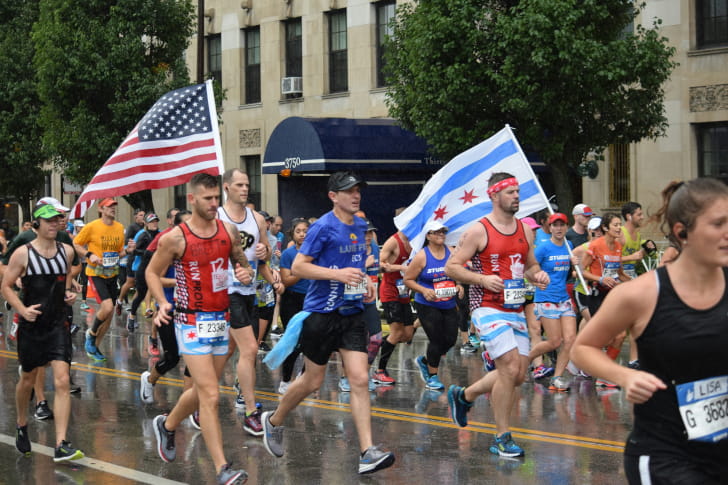Chicago was the second U.S. city after Boston to establish an annual marathon race. The first Chicago Marathon was organized by the Illinois Athletic Club on September 23, 1905. Only a little over a dozen runners participated, and only seven completed the course. However, the race unexpectedly attracted about 100,000 spectators. The Chicago Marathon was held annually until the early 1920s when societal challenges sidelined the event.
Interest in marathon races in the United States began to resurface in the 1970s, in no small part thanks to Frank Shorter’s gold medal win in the marathon at the 1972 Summer Olympics. Shorter was not the first American athlete to win the Olympic marathon, but he was the first since 1908. His Olympic victory is credited with inspiring the running boom of the 1970s in the United States.
The revival of the Chicago Marathon was part of this boom. In 1976, a group of runners met at the YMCA on LaSalle Street to plan a new marathon in Chicago. The revived Chicago Marathon took place on September 27, 1977, as the Mayor Daley Marathon. It featured 4,200 runners and 2,128 finishers.
By the early 1980s, the Chicago Marathon had become a major rival to the New York City Marathon, which was established in 1970. As of 2023, the race had over 48,000 finishers. The Chicago Marathon has been held every year since its inception, except for two occasions: the 1987 event featured only a half-marathon because its main sponsor dropped out, and the 2020 event was canceled due to the COVID-19 pandemic.
The Chicago Marathon was originally held in August but now takes place in early October, typically on the eve of Columbus Day. The race starts and ends in Grant Park and winds through 29 neighborhoods. The course’s turning points are near Chicago’s major professional sports stadiums: Wrigley Field, the United Center, and Rate Field. Soldier Field, the city’s fourth major stadium, is located near Grant Park.
There are two ways to participate in the Chicago Marathon: with a guaranteed entry or a non-guaranteed entry. Guaranteed entry options include running on behalf of and fundraising for an official Chicago Marathon charity, applying through the International Tour Group program, or qualifying through one of the official qualifying races. Established in 2002, the Chicago Marathon Charity Program has since helped raise over $200 million for various causes. It currently features more than 200 different charities with a wide range of causes.
Additionally, a number of guaranteed spots are available for legacy finishers, i.e. runners who have finished the Chicago Marathon at least five times in the past decade. Those not eligible for guaranteed entry may apply for non-guaranteed entry by lottery. All participants must pay an entry fee, and all proceeds are used to cover organizational costs.





